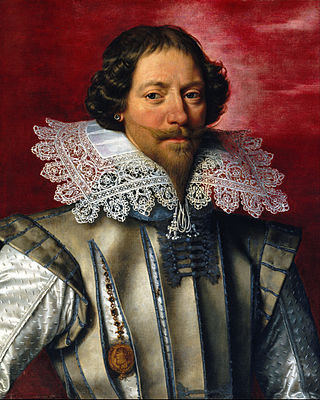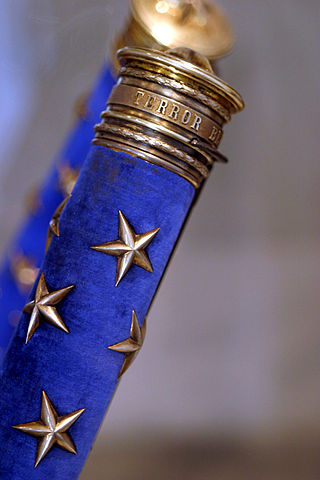

The Grand Falconer of France (French : Grand Fauconnier de France) was a position in the King's Household in France from the Middle Ages to the French Revolution.


The Grand Falconer of France (French : Grand Fauconnier de France) was a position in the King's Household in France from the Middle Ages to the French Revolution.
The position first appeared in 1250 as "Master Falconer of the King" (Maître Fauconnier). The title was changed to Grand Falconer in 1406, although the title of "First Falconer" (Premier Fauconnier) was sometimes also used. The Grand Falconer was responsible for organizing the royal falcon hunt and for caring for the king's hunting birds. The position was one of the "Great Offices of the Maison du Roi".
From the reign of Louis XIV, the position became purely honorific, as the kings had stopped hunting with birds of prey. This notwithstanding, Louis XIV maintained an aviary of hunting birds, located (from 1680 on) in Montainville, as a symbol of power. Falcons were presented to the king at the start of each year in the Galerie des Glaces of the château of Versailles, generally in the presence of foreign ambassadors. Only northern kings and the Grand Falconer had the right to pose a falcon on the hand of the king.
The coat of arms of the Grand Falconer featured two lures in blue and fleur-de-lys, placed below and to each side of the shield.

Charles d'Albert, 1st Duke of Luynes was a French courtier and a favourite of Louis XIII. In 1619, the king made him Duke of Luynes and a Peer of France, and in 1621, Constable of France. Luynes died of scarlet fever near the end of that year at the height of his influence.

Marshal of France is a French military distinction, rather than a military rank, that is awarded to generals for exceptional achievements. The title has been awarded since 1185, though briefly abolished (1793–1804) and for a period dormant (1870–1916). It was one of the Great Officers of the Crown of France during the Ancien Régime and Bourbon Restoration, and one of the Grand Dignitaries of the Empire during the First French Empire.

Duke of Brissac is a title of French nobility in the Peerage of France, which was originally created in 1611 for Charles II de Cossé, Count of Brissac. This title has been held since April 2021 by Charles-André de Cossé, who is the 14th Duke of Brissac. The ancestral home of the ducal family is the Château de Brissac, which is still owned by the family.

Duke of Chevreuse was a French title of nobility, elevated from the barony of Chevreuse in 1545.

The Superintendent of Finances was the name of the minister in charge of finances in France from 1561 to 1661. The position was abolished in 1661 with the downfall of Nicolas Fouquet, and a new position was created, the Controller-General of Finances.

The Gardes du Corps du Roi was the senior formation of the King of France's household cavalry within the maison militaire du roi de France.
A Colonel General was an officer of the French army during the Ancien Régime, the French Revolution, the Napoleonic era and the Bourbon Restoration.
The Duke of Luynes is a territorial name belonging to the noble French house d'Albert. Luynes is, today, a commune of the Indre-et-Loire département in France. The family of Albert, which sprang from Thomas Alberti, seigneur de Boussargues, bailli of Viviers and Valence, and viguier of Bagnols and Pont-Saint-Esprit in Languedoc, acquired the estate of Luynes in the 16th century.

Honoré Théodore Paul Joseph d'Albert, 8th Duke of Luynes was a wealthy French nobleman and scholar. He is most remembered for the collection of exhibits he gave to the Cabinet des Médailles in 1862, and for supporting the exiled Comte de Chambord's claim to the throne of France. Throughout his life, D'Albert inherited a number of French titles, including Duke of Luynes, de Chevreuse, and de Chaulnes.

Charles Honoré d'Albert de Luynes was a French nobleman and Duke of Luynes. He is best known as the Duke of Chevreuse, his family's subsidiary title which he used until his father's death in 1690. He was a high-ranking French official under King Louis XIV.

The military governor of Paris is a post within the French Army. He commands the garrison of Paris and represents all the military based in Paris at high state occasions. He is also responsible for organizing major national ceremonies such as the Bastille Day military parade down the Champs-Élysées.

Charles de Cossé, Count of Brissac, was a French courtier and soldier, named beau Brissac at court and remembered as the Maréchal Brissac. A member of the nobility of Anjou, he was appointed in 1540 to his father's prestigious former post of Grand Falconer of France, one of the Great Officers of the Maison du Roi. This was not purely honorary, as the king still hunted with falcons. Brissac was also Grand Panetier, and his position as colonel general of the cavalry (1548–49) was a court appointment. Raised to Marshal of France in 1550, he was Grand Master of the Artillery. He was eventually given the title of Count of Brissac. His son, Charles II de Cossé, became the first Duke of Brissac.

Jeanne de Coëme, Dame de Lucé and de Bonnétable was a French noble and courtier. She was the daughter of Louis de Coesme and a member of the House of Bourbon. She married François de Bourbon, titled the Prince of Conti. As such, after her marriage she was the Princess of Conti.

Amédée-François-Régis de Pérusse des Cars, Duke of Cars, was a French nobleman and soldier.
Philippe Anne Louis Marie Dieudonné Jean d'Albert, 11th Duke of Luynes was a French aristocrat who became the Duke of Luynes at the age of nineteen and held the title until his death in 1993.

Louis Charles d'Albert, 2nd Duke of Luynes, was a French nobleman and peer of France. He was a translator and moralist who was the first translator of the work of René Descartes.
Louis Joseph d'Albert, 3rd Prince of Grimberghen was a French nobleman who was in the service of the Emperor Charles VII, and became field-marshal and Ambassador in France.
Louis Emmanuel de Crussol, 14th Duke of Uzès was a French aristocrat and art collector.
Honoré-Louis d'Albert de Luynes, styledDuke of Chevreuse, was a French nobleman.